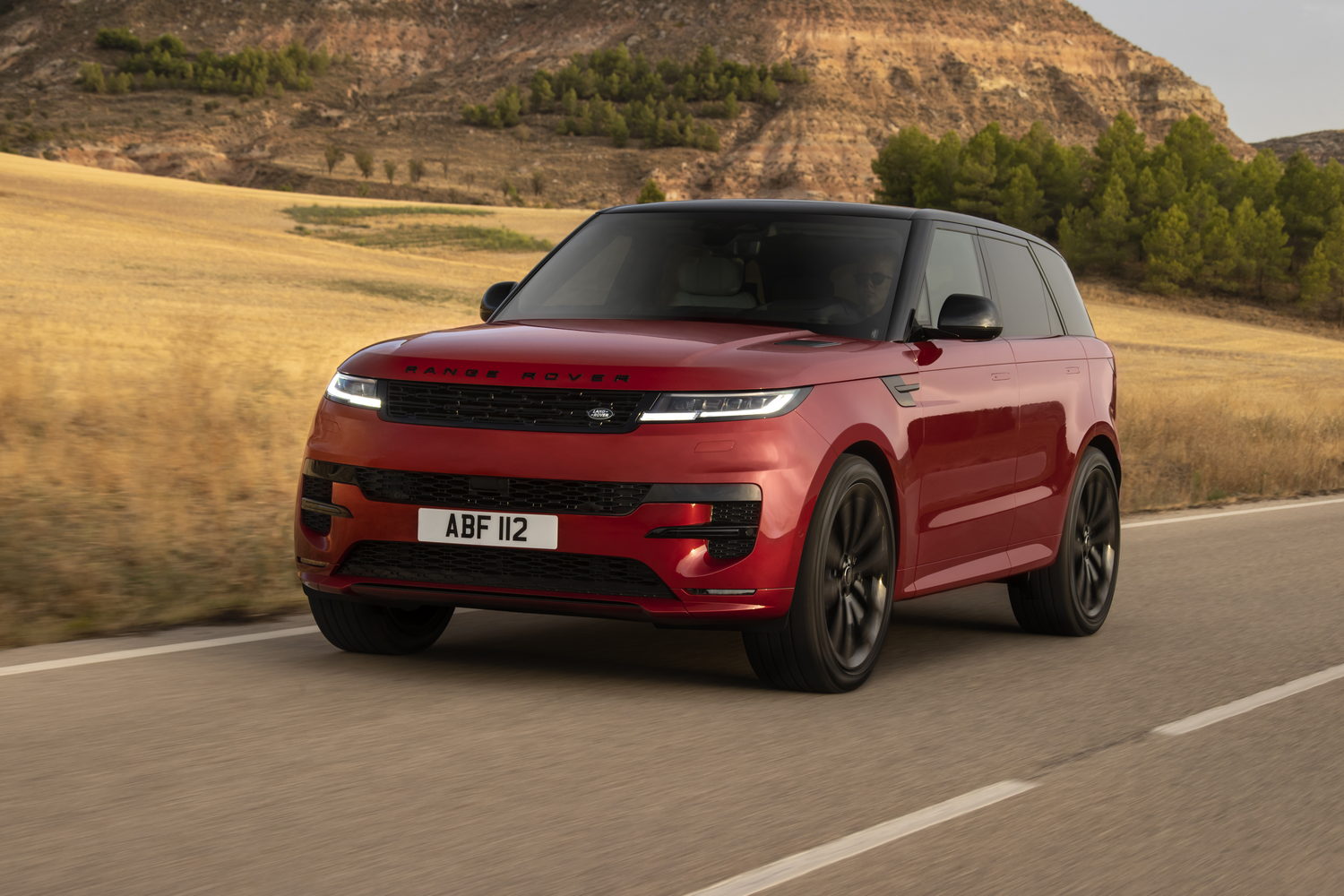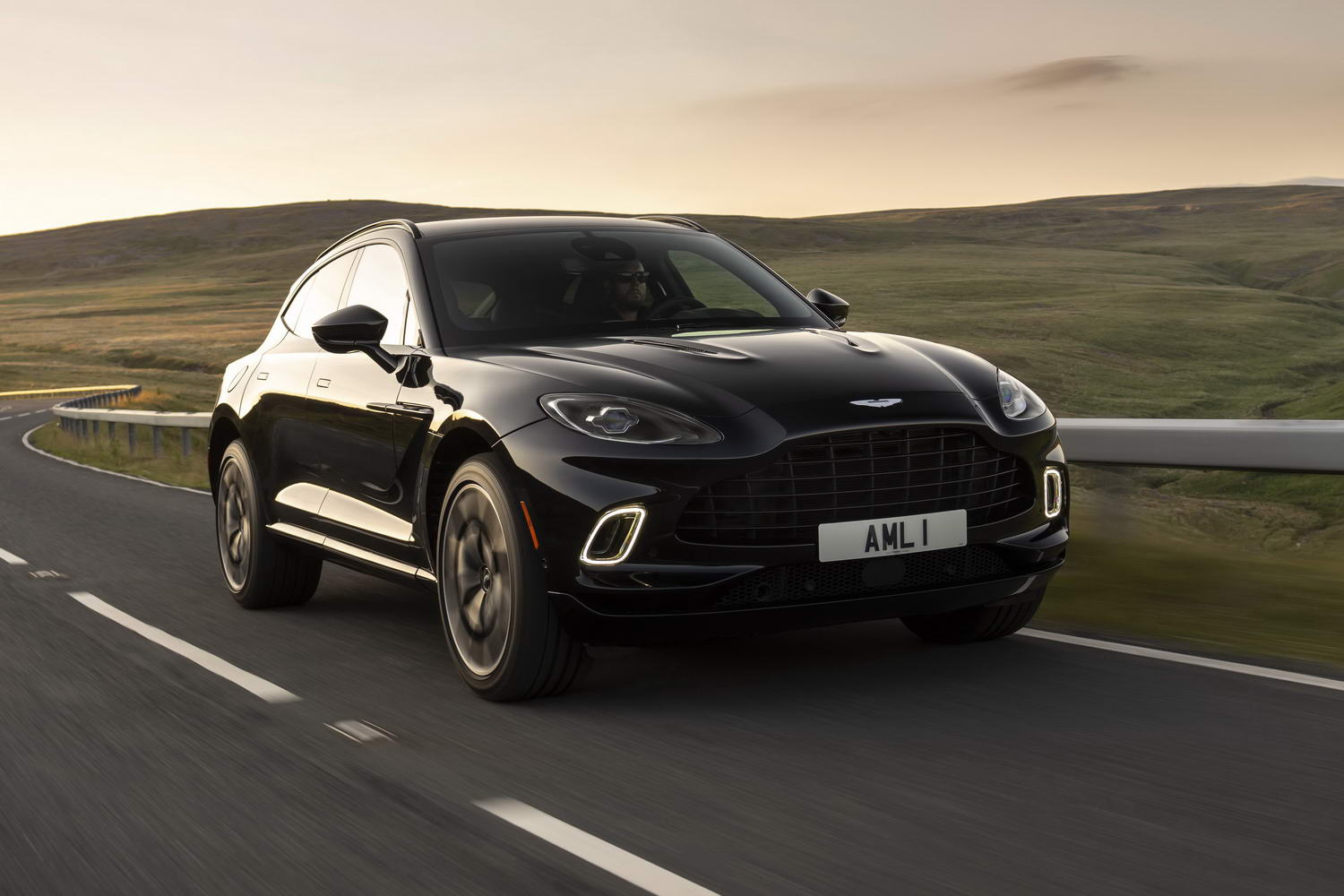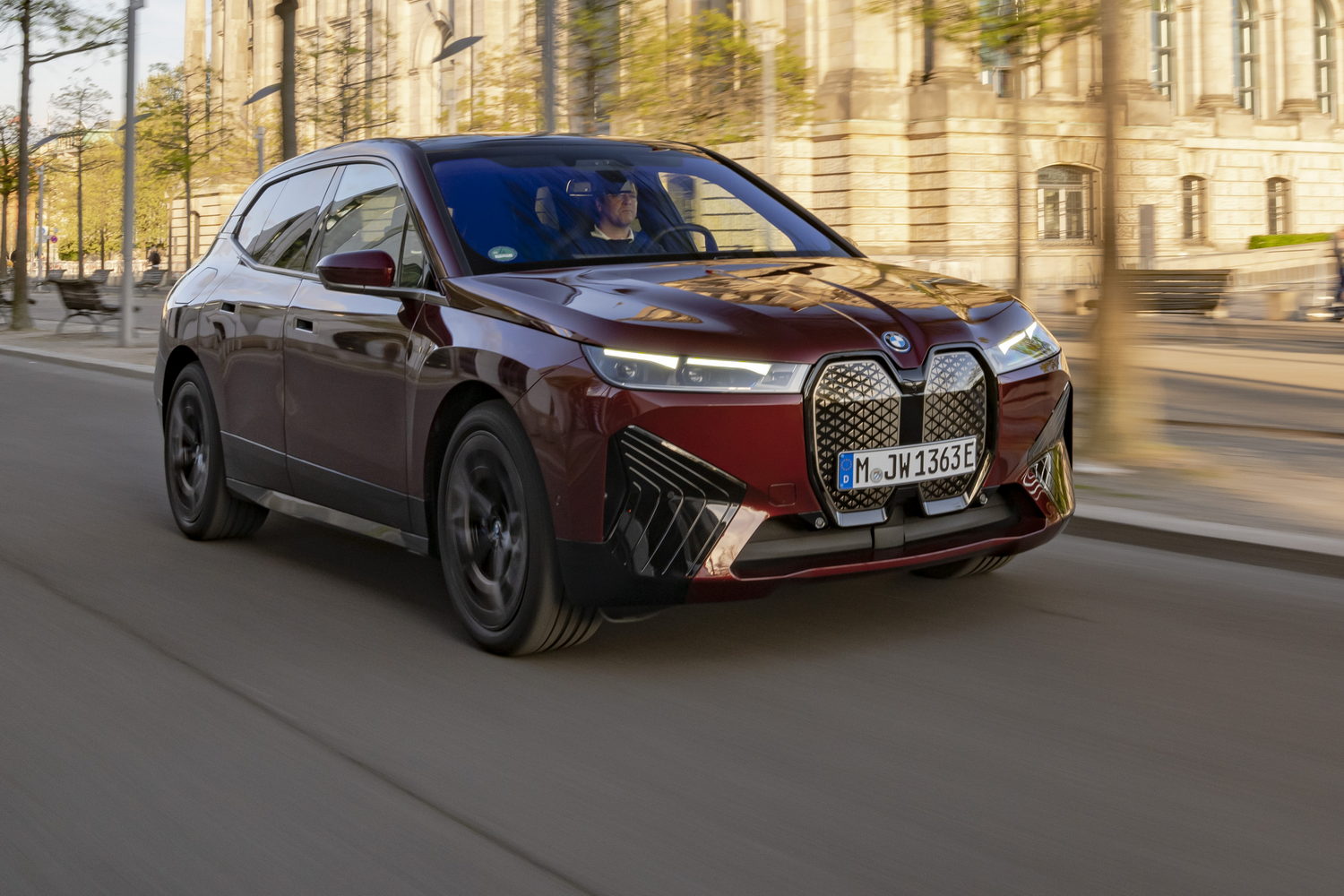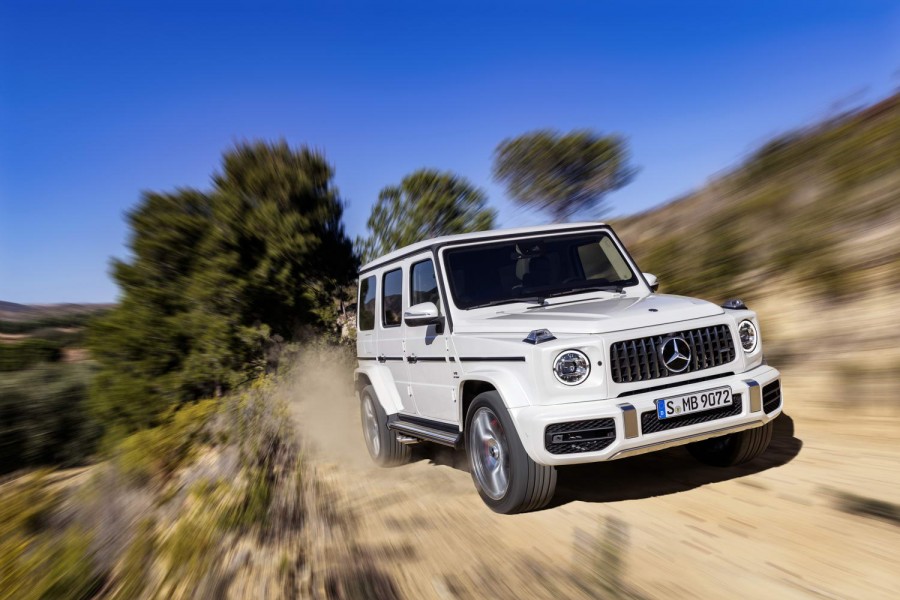The new Range Rover Sport does what these models have always done - distil the character of the bigger Range Rover down into a (slightly) smaller and (much) more agile package. While it doesn't look wildly different to the old model - and while the plug-in hybrid version will be far more relevant to Irish customers - it's very hard indeed to resist the allure of this fast and furious V8-engined Range Rover Sport.
In the metal
You could, conceivably, mistake this new Range Rover Sport for its predecessor. After all, Land Rover's styling team have been careful not to upset the customer applecart with the way this new Sport looks. When a vehicle has been such a storming success (pun very much intended) as the Range Rover Sport has been, you can understand any reluctance to make changes. There are differences, of course. The overall styling is cleaner and leaner than what went before, with less ornamentation other than some prominent bonnet vents. This stylistic reticence is to be applauded, but there is an argument that the new Range Rover Sport looks less distinctive than the original 2004 version.
The most distinctive part of the styling is at the rear, where instead of the big Range Rover's partially hidden vertical taillamps, you get a more prominent set of horizontally aligned lights, separated by a large black panel with the Range Rover name picked out upon it. This is supposed to give the Sport a more planted and aggressive look, but actually from dead-astern it does the opposite, and kind of draws the eye to just how ludicrously tall the whole thing is. The styling of the bigger Range Rover is arguably better resolved.
Mind you, bigger is a relative term. Previously, there was more in the way of clear air between the Sport and the full-fat Range Rover. Now the difference is measured in mere millimetres. This Range Rover Sport is just under five metres long, compared to just over five metres for its bigger brother, and both cars are the same width overall. The Sport is 50mm lower though, and looks somewhat sleeker thanks to the more obvious pitch at the rear of the roof.
That sleeker roofline means that there's no seven-seat option, nor will there ever be. The logic of the Land Rover line-up now means that if you want the extra seats, you can go for the long-wheelbase Range Rover, or the Discovery, or the Defender. The Sport is now meant to be that which its name suggests - the sporty, focused one. Whether that lack of a third row reduces its desirability, even its saleability, remains to be seen.
Inside, there is barely any difference between the Sport and the Range Rover. You get the same seats in the front, the same digital displays and minimalist dashboard and the same sense of generally very high quality. It's a nicely crafted cabin, and one that majors on comfort - the front seats are exceptionally supportive on a long run and, if there is fractionally less space in the back than you'll find in the full-size Range Rover, then it's hardly what you'd call cramped.
Underneath, the Range Rover Sport uses the same platform as you'll find under the new Range Rover. An all-new setup, this has been designed to accommodate petrol, hybrid and fully-electric power. Thusly, there is already a long-range (113km) plug-in hybrid model, and by 2024 we'll see the first fully-electric Range Rover Sport. Our test car, though, is packing a 4.4-litre twin-turbo V8 engine bought in from BMW, developing 530hp and 750Nm of torque. As we head towards an electric future, it's a tantalising last hurrah for big, noisy, bent-eight SUVs.
Keeping all of that power in check is a chassis stiffness that Land Rover claims is the envy of some sports car makers, as well as dual-chamber air suspension. This is a deliberate point of difference between the Sport and the bigger Range Rover, along with the twin-valve dampers developed for the car by the suspension experts at Bilstein, sacrificing the last few degrees of comfort in search of greater precision and pinpoint handling. You can also spec your Range Rover Sport with the 'Stormer Handling Pack.' Named after the original Range Stormer concept car that previewed the first generation of Range Rover Sport, this includes Dynamic Response Pro (a hydraulic active anti-roll system), all-wheel steering (which trims the turning circle of this big vehicle to under 11 metres), an active electronic differential and torque-vectoring by braking individual wheels.
Driving it
The first question is can it go off-road? Well, of course it can. Land Rover put us on a dusty and bumpy off-road course in the car and, even on road-biased tyres and massive (optional) 23-inch alloy wheels, the Sport didn't break even a bead of sweat dealing with rocky descents, sandy inclines and even a narrow gully that saw tree-roots brushing the panoramic glass roof. Without question, this car is far more capable than all but a tiny handful of owners will ever ask it to be.
On-road, though? It's really quite brilliant, albeit with one major flaw. Well, two major flaws if you count the cost of running this massive V8, both to you and the planet. In fairness, so few V8 Range Rovers will be built and sold (more than 90 per cent of Irish buyers will go for the plug-in hybrid) that their cumulative environmental impact should be pretty minimal. Of course, an official fuel consumption figure of 11 litres per 100km isn't too clever, and the 14.1 litres per 100km we achieved even less so. Then again, if you can afford the €200k+ price tag, you're not likely to be much bothered by an increased fuel bill or three.
What this V8 is exceptionally good at is science. By which I mean, when you accelerate it sits down, cracks open the Big Book of The Laws of Physics and starts vigorously ripping out any of the pages to do with mass or inertia. The way this 2.5-tonne car whips forward on a sniff of throttle is at first bewildering, at second sheer fun and at third deeply addictive. The 4.4-litre engine does roar in a traditional V8 fashion, but the car's overall refinement - aided by noise-cancelling speakers in the front headrests - is such that it sounds cultured and well-mannered, as if The Incredible Hulk has been to a Swiss finishing school.
The claimed 4.5-second 0-100km/h time is comparable to that of the previous-generation BMW M3, and feels even more ridiculously quick when your hips are sitting up by most drivers' earlobes. Brawny doesn't even begin to cover it.
What about the handling, though? It's really quite brilliant, and again the physics book lies tattered on the floor. There's none of the nose-weight inertia of the bigger Range Rover here - the Sport turns in fast and accurately, your line picked out by meaty, responsive steering. It grips and clings on tight, with the body kept largely flat by that clever anti-roll system - just enough body lean is allowed to let you know how hard you're trying, which is actually pretty helpful, and it only starts to feel tipsy when, frankly, you're trying too hard. It's astonishingly good fun to fling around. A Porsche Cayenne is arguably sharper still, but the Range Rover Sport strikes a really impressive compromise between cornering agility and everyday comfort.
Well, mostly. Just avoid the 23-inch rims. They do look good, I'll grant you, but they allow too much bump-thump up through the suspension turrets. It's never a jarring car, the Sport, and on a reasonable road surface it's superbly comfortable, but on any stretch with some sudden, sharp bumps it just starts to become a bit wearing and you start to wish you'd bought a basic model with smaller rims.
What you get for your money
In V8 form, with a €200k+ price tag, the Range Rover Sport is really an expensive toy. First Edition spec does get you some extra equipment compared to the base version - including those alloys, upgraded LED lights, semi-aniline leather seats and a storming (that word again) Meridian sound system - but any Range Rover Sport model is well equipped, and spending this much extra does feel like more than a small indulgence. Even if it does get you that wonderful V8 engine.
Summary
This particular Range Rover Sport is entirely irrelevant in an Irish context. If your home address isn't Palm Springs, or downtown Riyadh then you're not going to be buying the V8. Those who do, net of climate-guilt, are going to be getting a remarkable car - fast, handsome, balanced, fun and practical. A fantastic final V8 hurrah. It shows off the new Range Rover Sport's talents, too.























